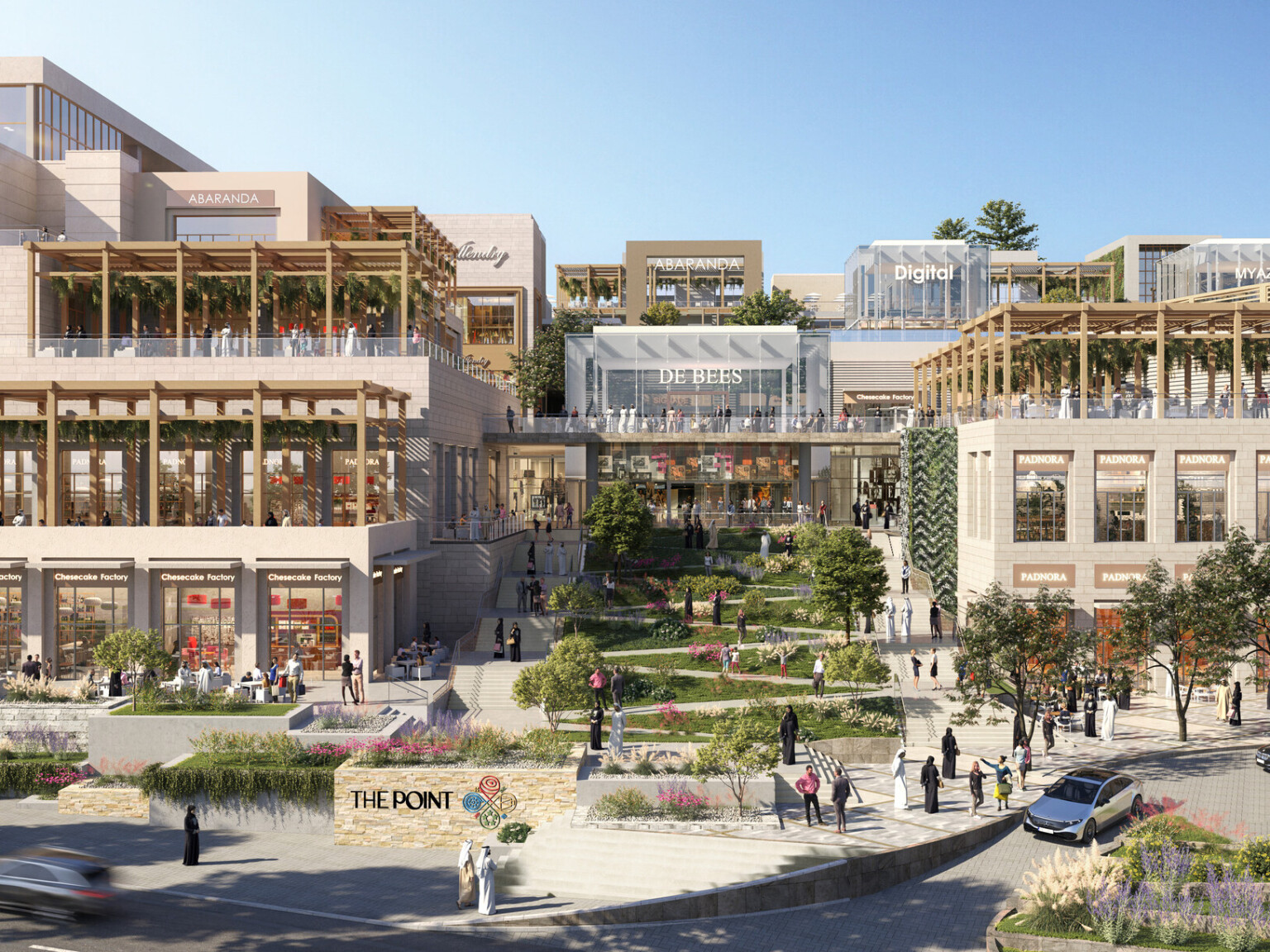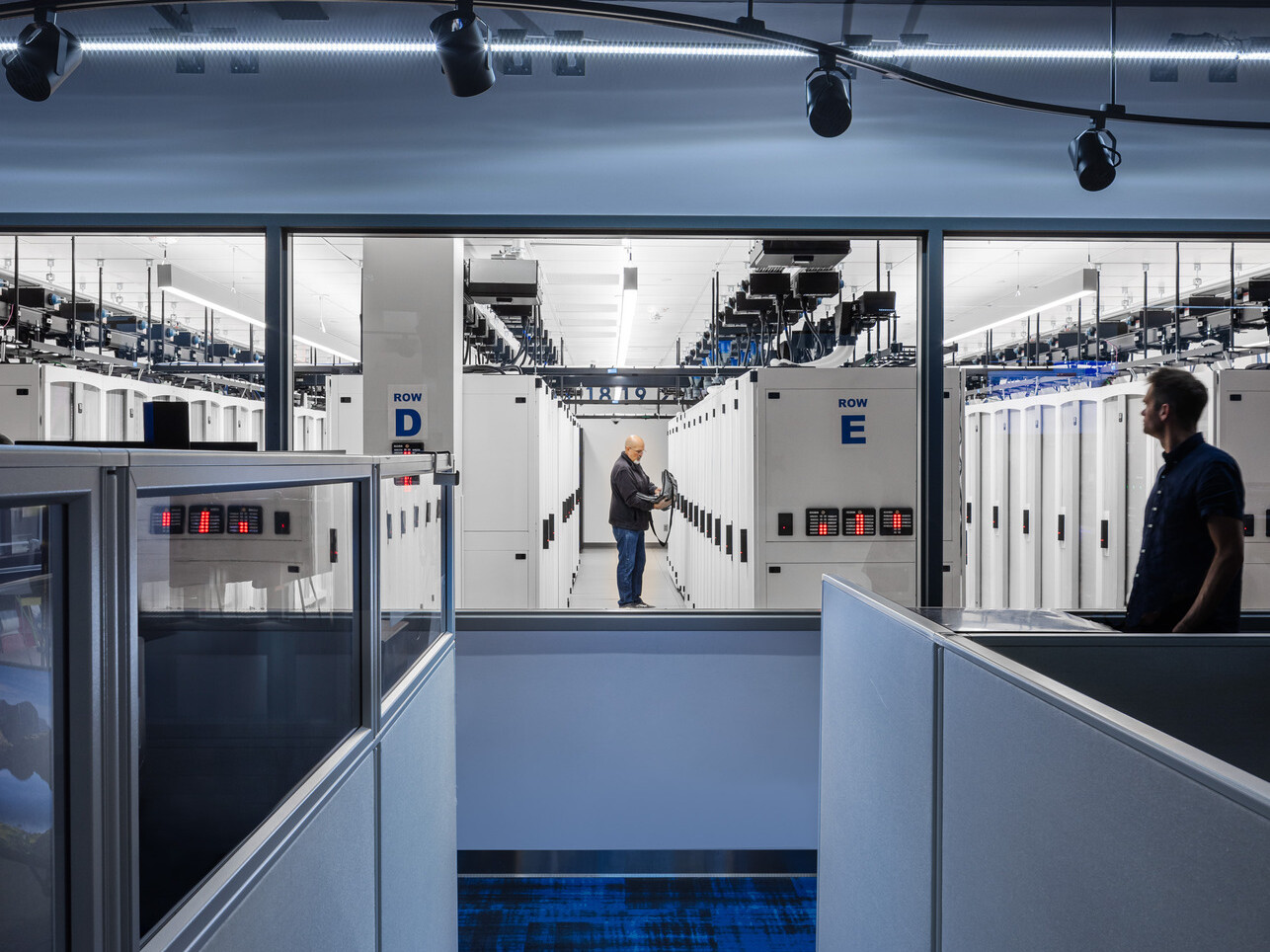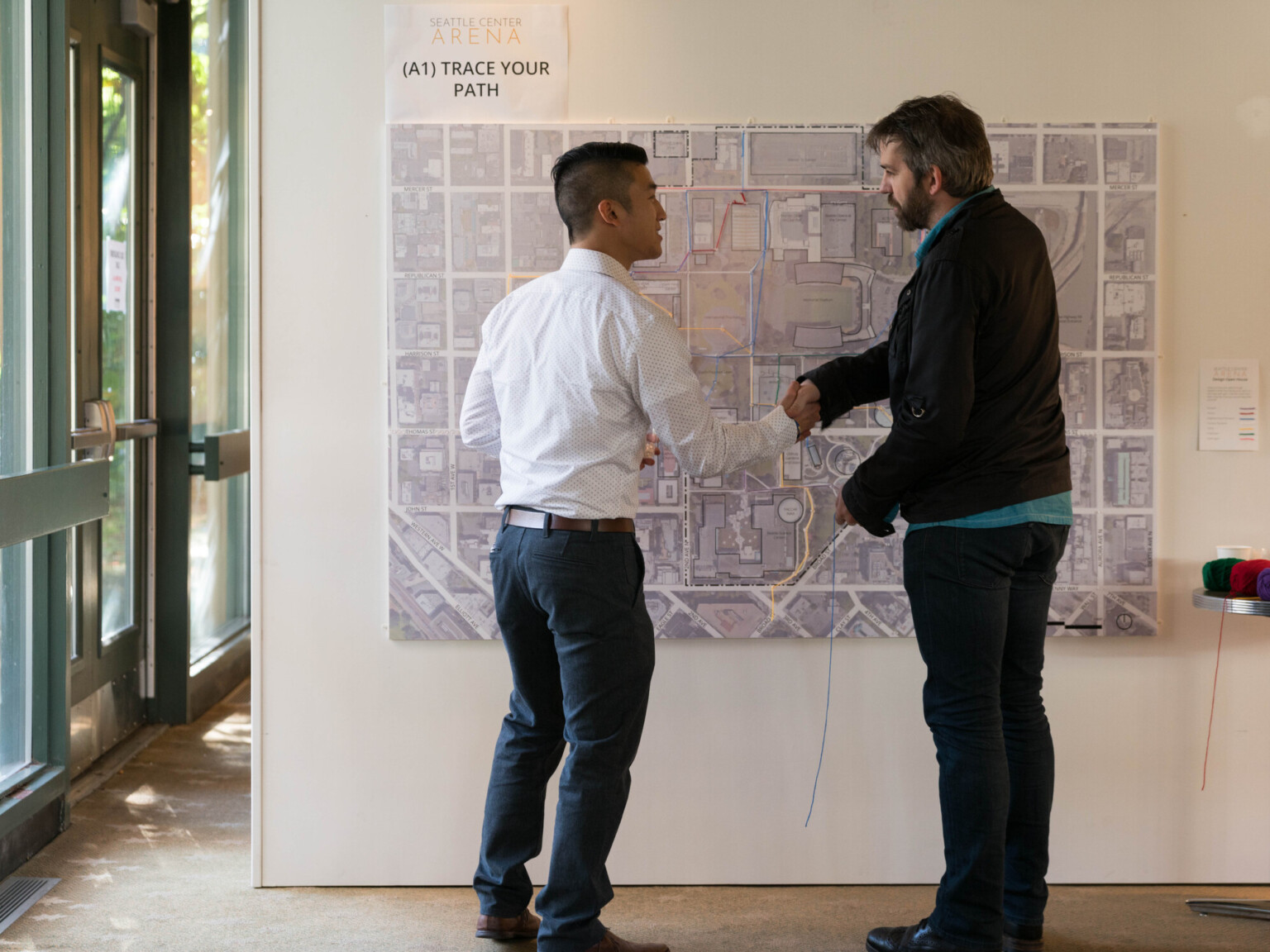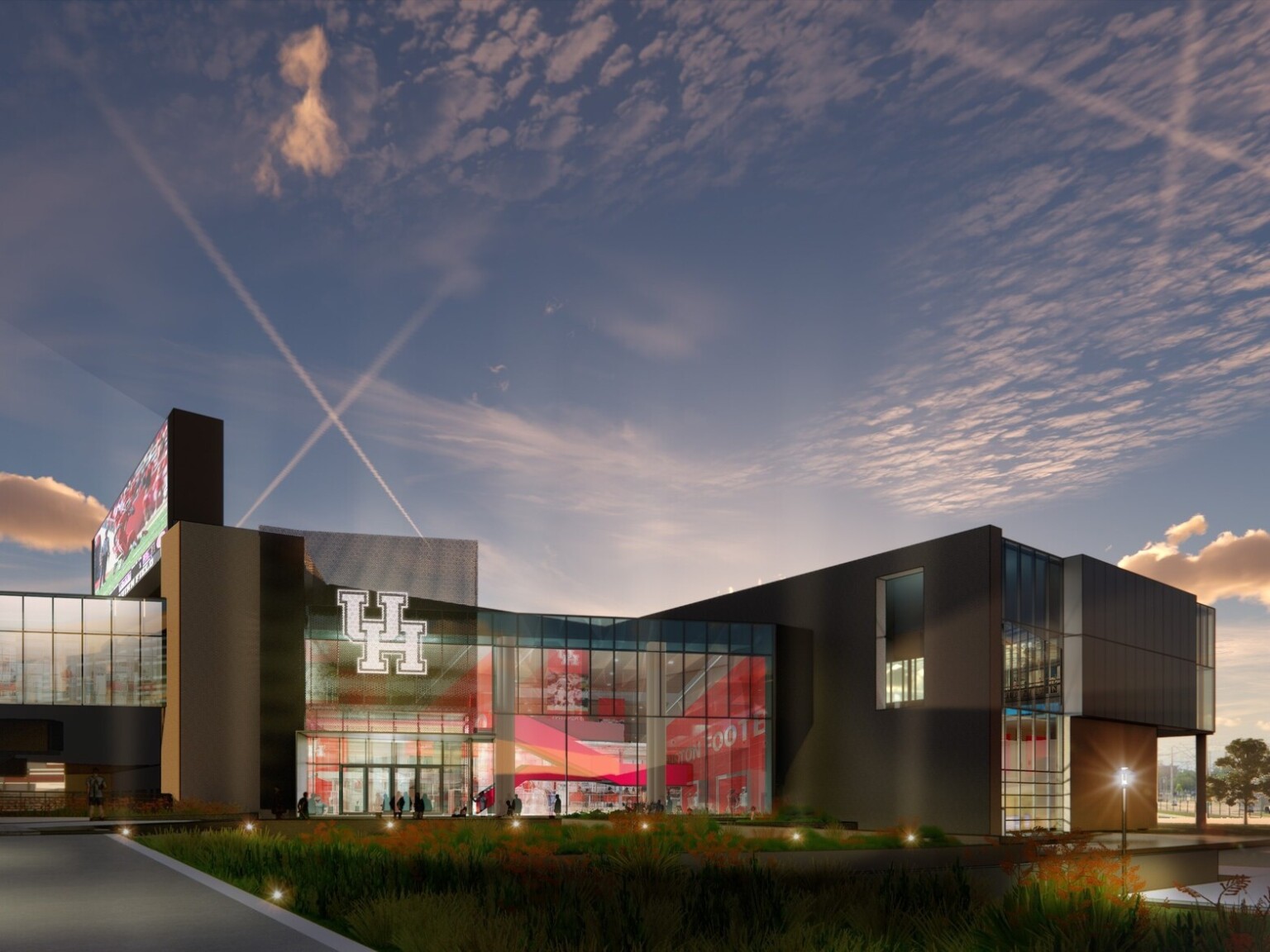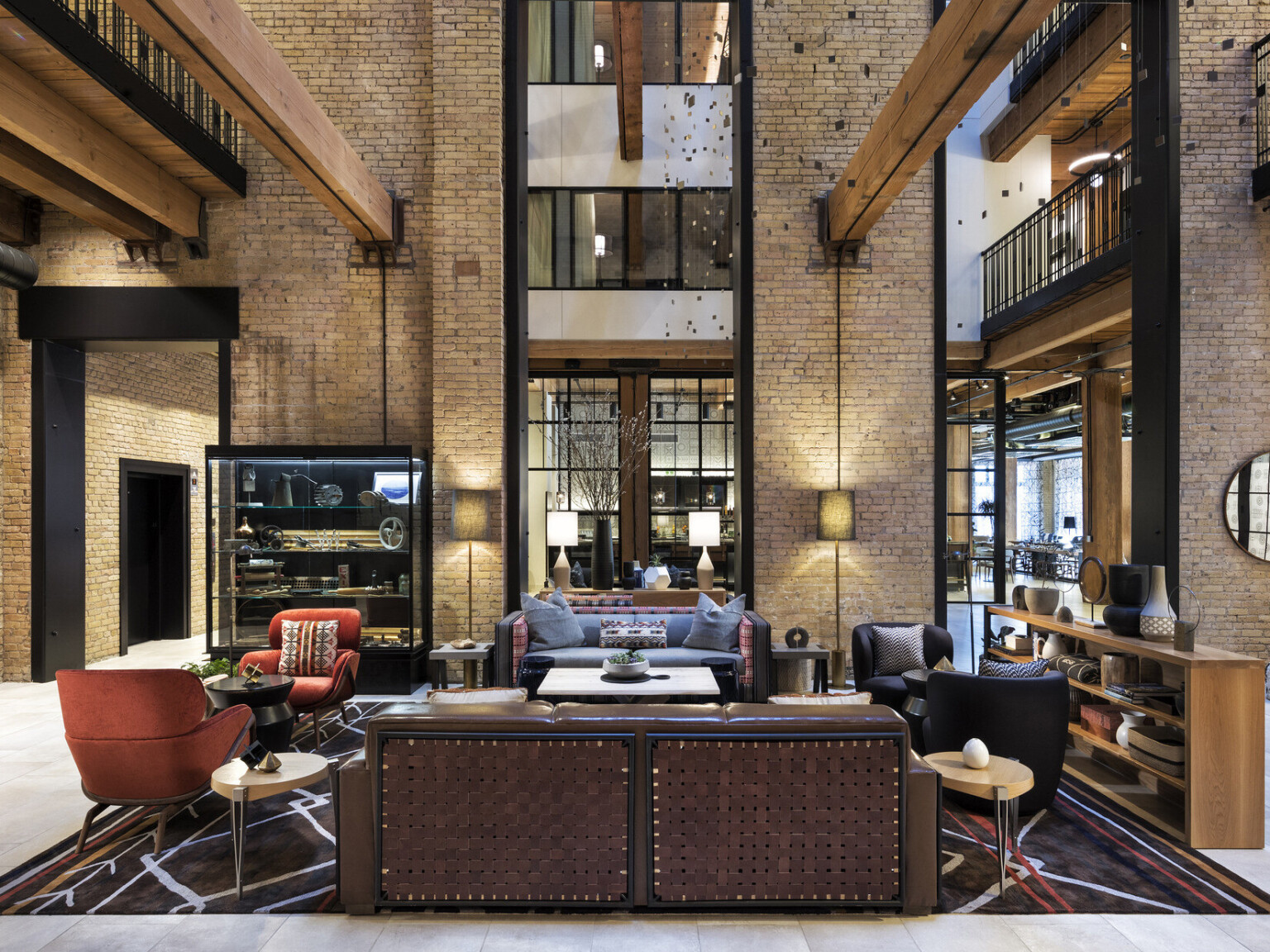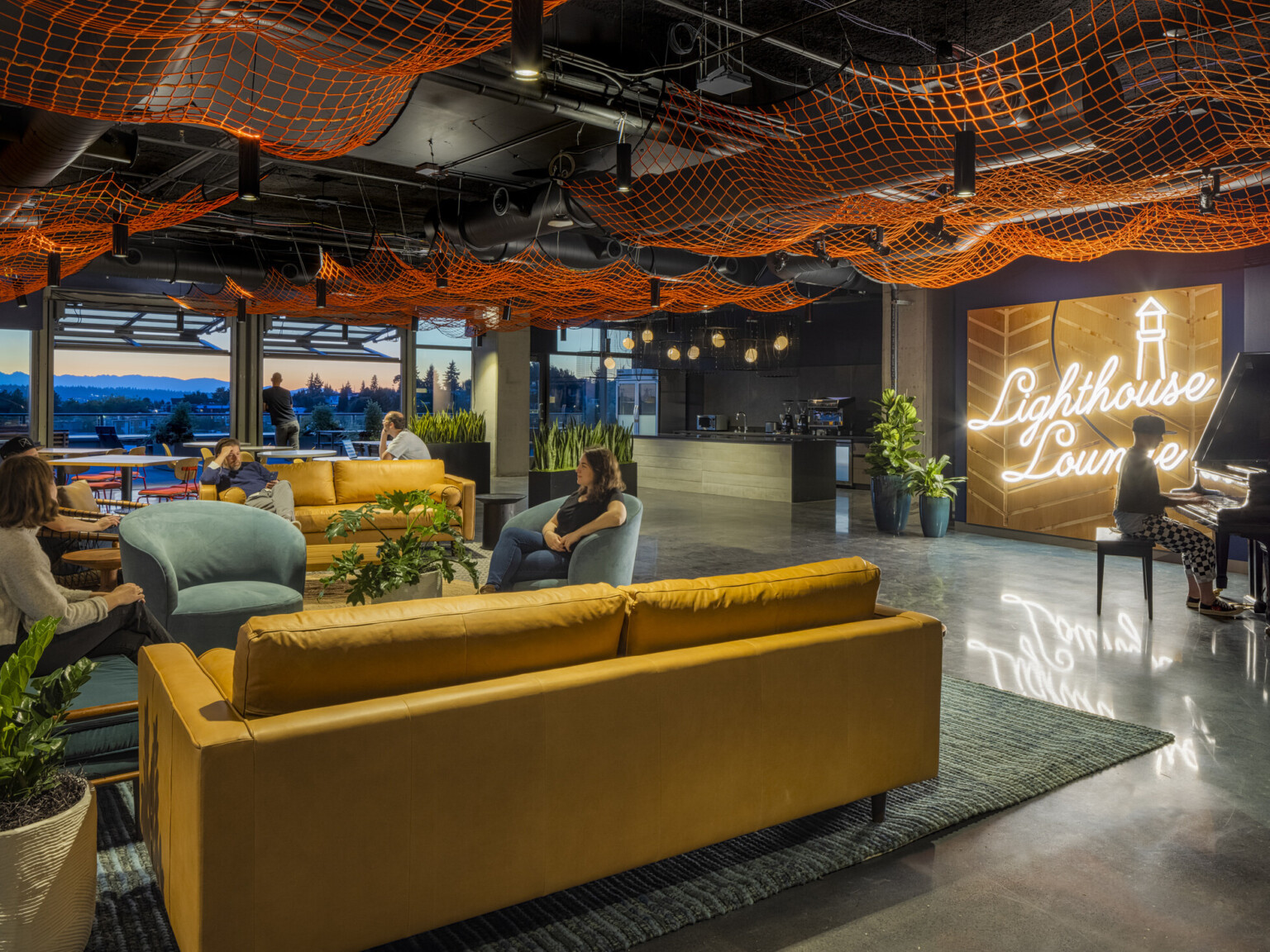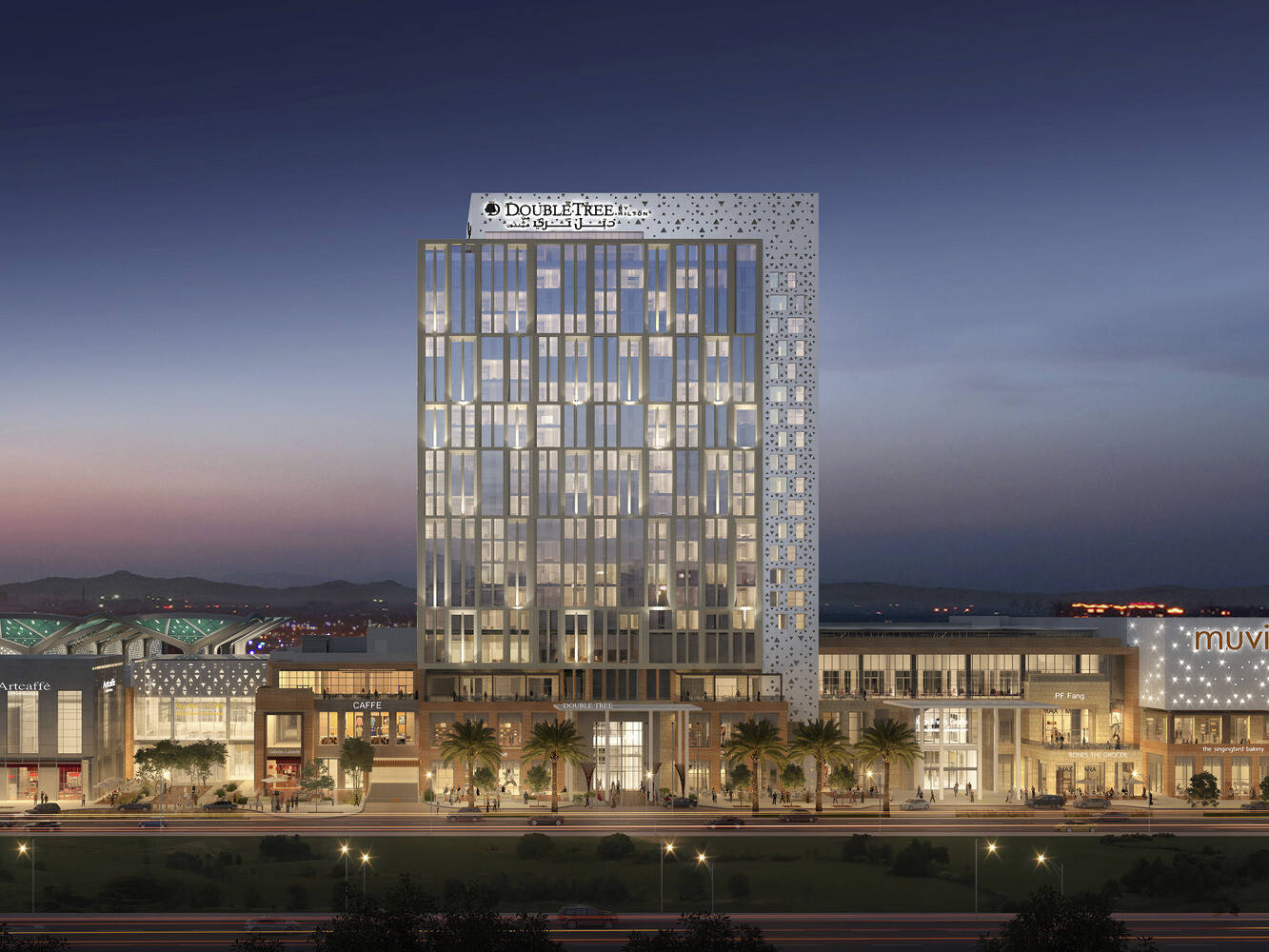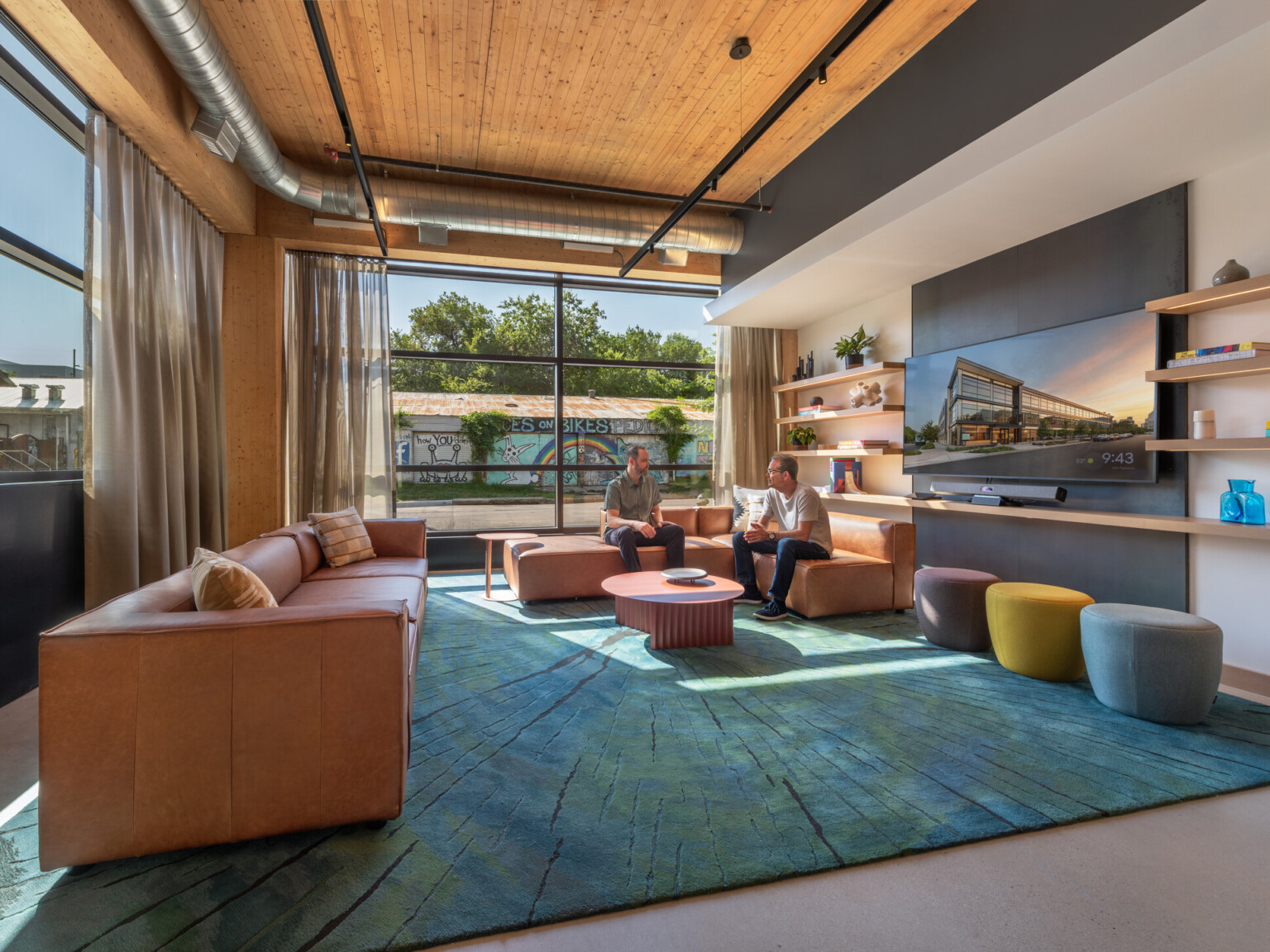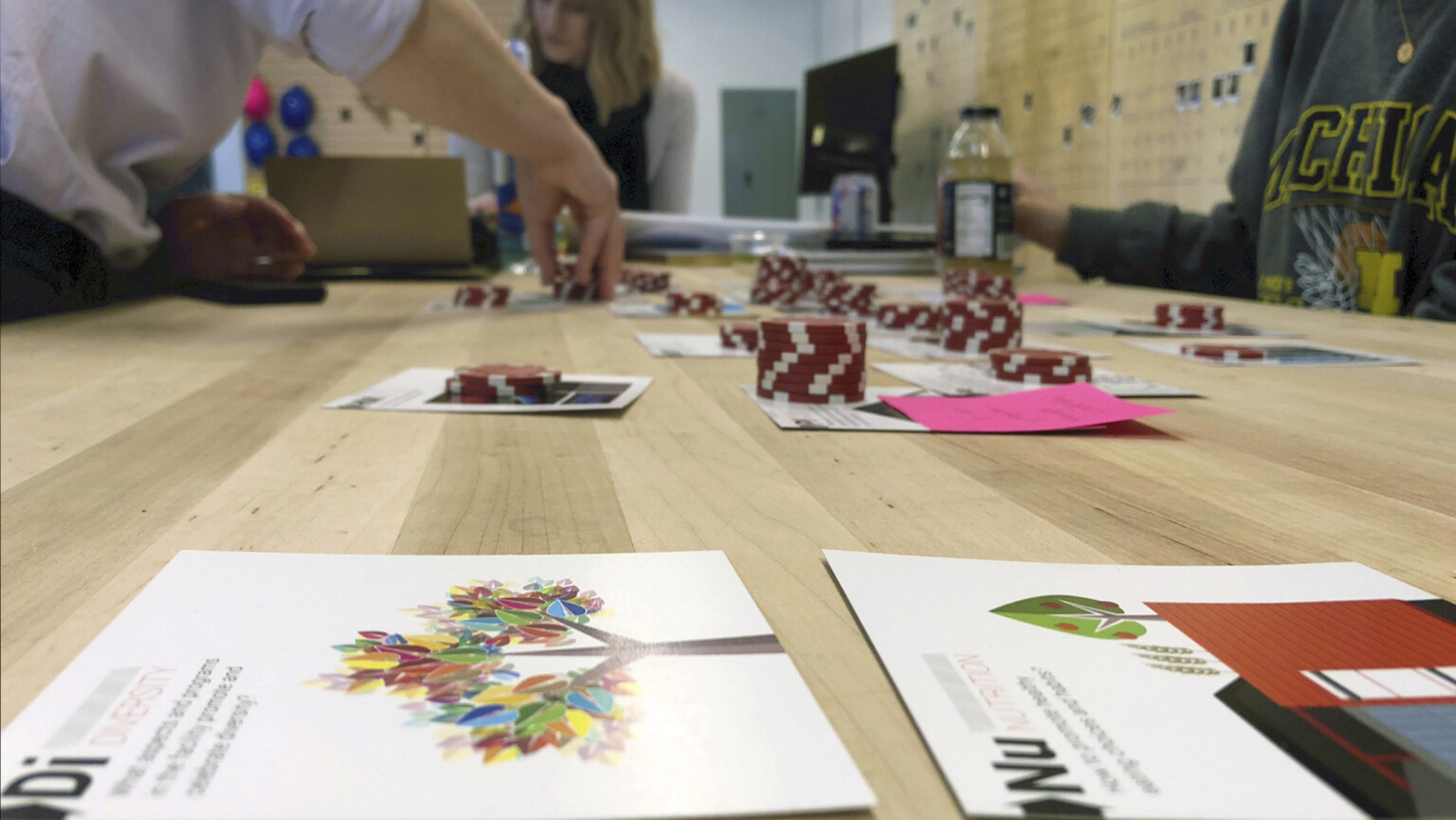
Climate Literacy: Gamifying Sustainable Design
How to Play the Cooperative Game
Once players have discovered their project’s sustainability priorities through VALUES, the design team’s work begins. Each card in the deck connects to one or more of five Design Outcomes from our Sustainability Action Plan, and can be mapped to common green building certification program criteria. We also define how the priorities will be observed, experienced, and measured when achieved.
Design Outcomes
Within each of the five Design Outcomes, we can find stories large and small that show how specific VALUES cards come to life and impact the people populating designed spaces.
Mindful Actions
The way people behave impacts the health of people, communities, and the environment. The built environment can effectively nudge people into new, more sustainable behavior patterns. The Transparency: Building Performance card is played at the Sterling Bay portfolio of properties. Continuous indoor air quality monitoring not only improves investor relations and ESG reporting, but also increases trust among commercial tenants by visualizing indoor environmental quality’s impact on health and cognitive function.

Thriving Together
Environmental, social, and economic resource availability significantly impacts a community’s ability to sustain emotional and physical wellbeing. The Community Access card is played at the Metro Nashville Campus for Youth Empowerment. At this comprehensive place of possibility, a family services and respite center help break the abuse-to-prison pipeline, while the secure treatment center features trauma-informed, normative living environments.
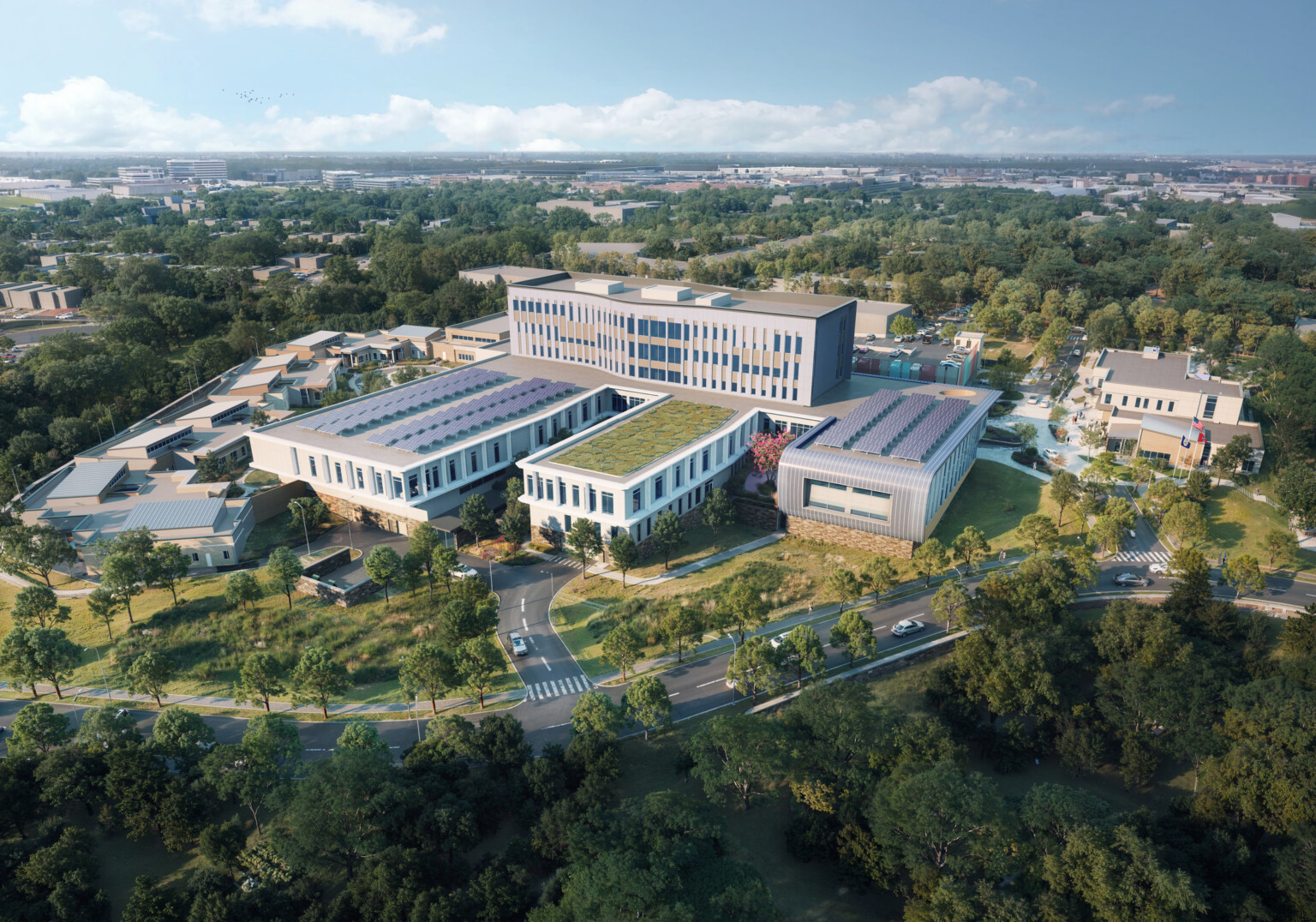
Nurturing Nature
In the Anthropocene, ecosystems and their non-human inhabitants need attention to maintain balance, be healthy, and thrive for generations to come. Leveraging existing building stock dramatically reduces embodied carbon and the footprint of human settlement. The Decarbonization: Materials card is played at Enveda Biosciences. An existing building was converted to a world-class office and laboratory facility that features direct connections to nature.
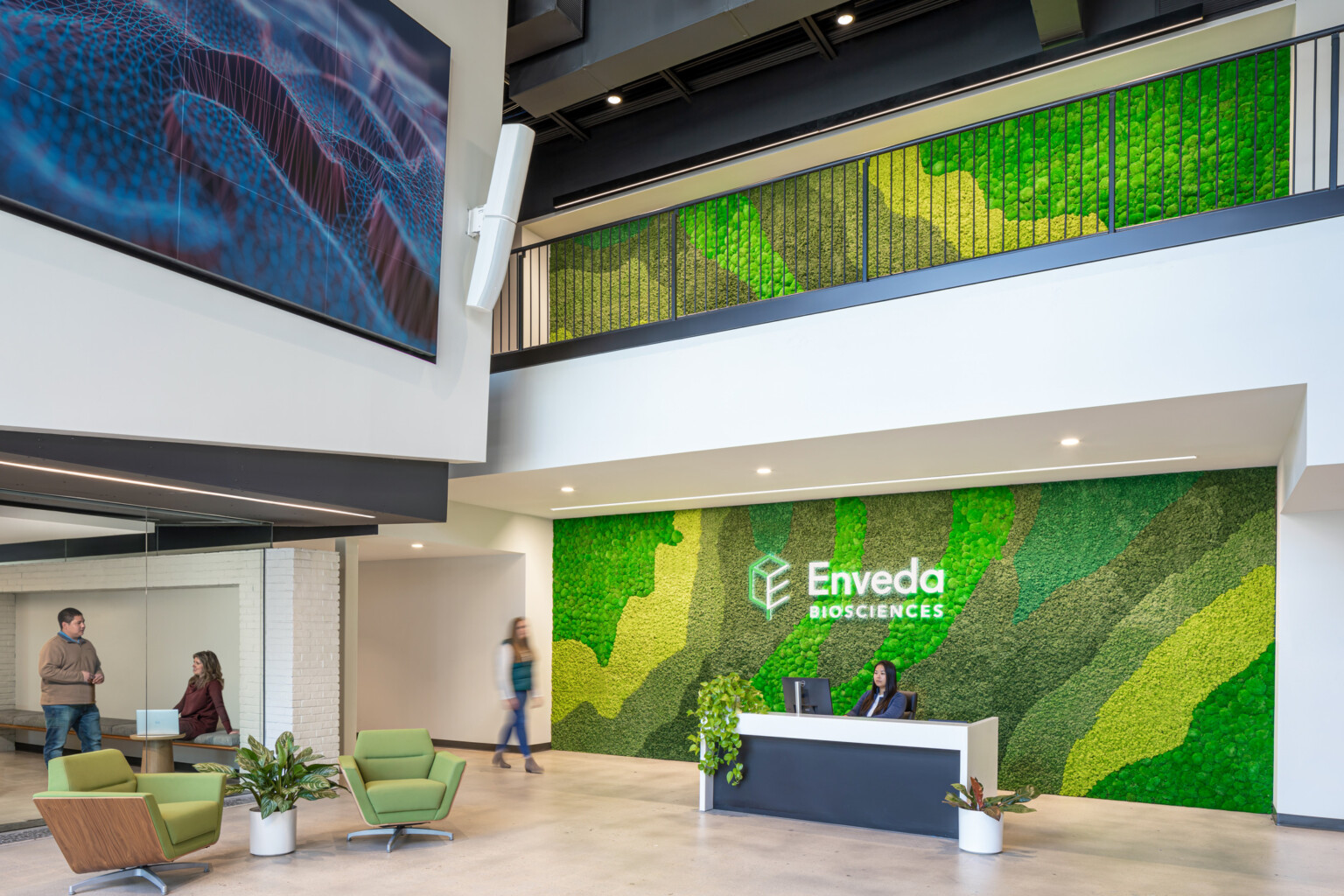
Holistic Wellbeing
Beyond simply the absence of disease or infirmity, human health encompasses a state of physical, emotional, and social wellbeing. The Neighborhood Vitality card is played at Austin Independent School District, where a novel equity-based approach to long-range planning considered neighborhoods with high social vulnerability in addition to facility conditions when making recommendations for capital projects.
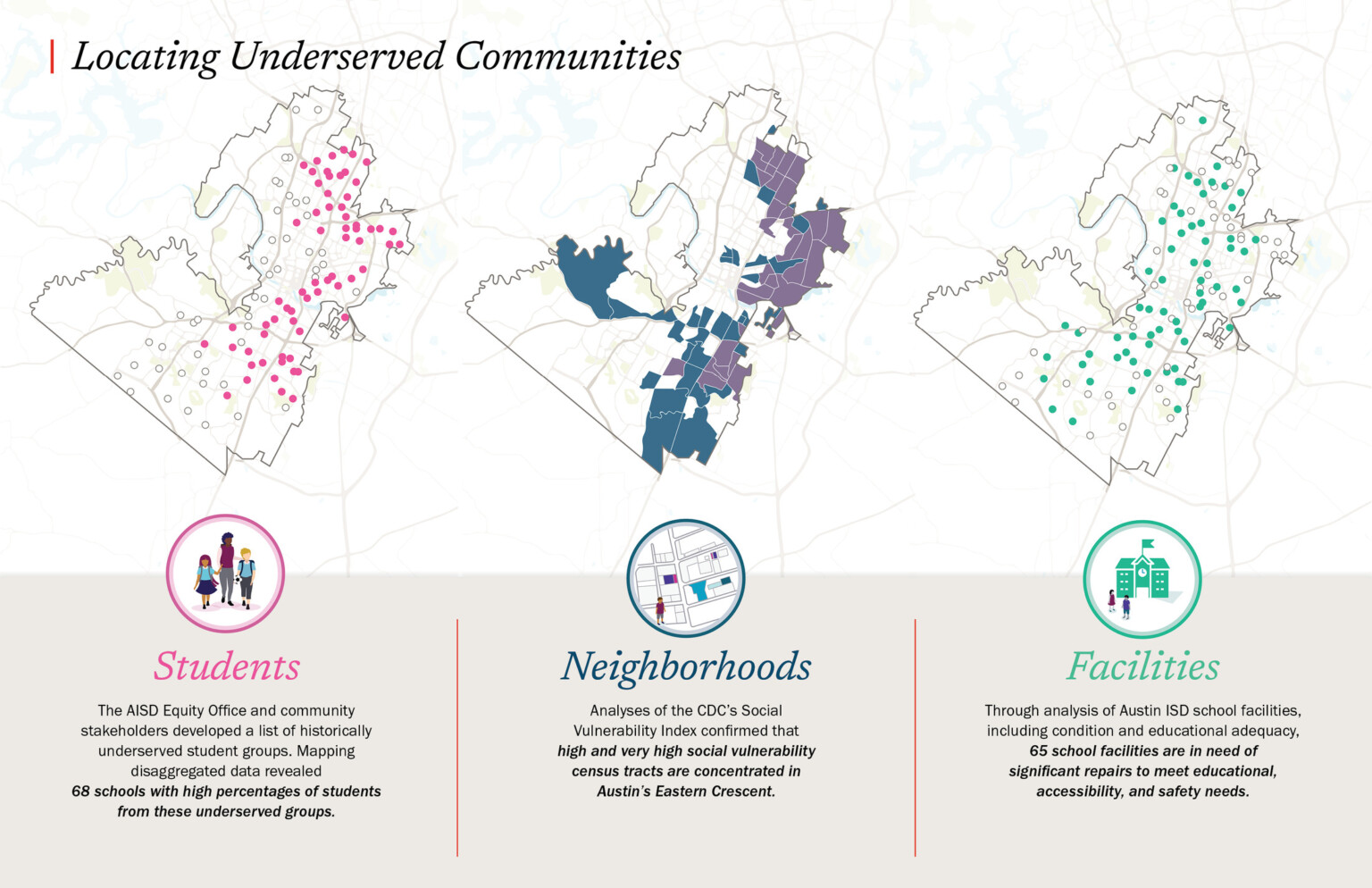
A Cleaner Horizon
Responsibly managing and protecting natural resources is linked to a long-term view that considers capacities for future generations. The Decarbonization: Energy card is played at Swarthmore College Dining and Community Commons. Designed as the nation’s first university carbon neutral multi-platform dining venue with all electric equipment and on-site renewable energy, the renovation and additions support the forward-thinking college’s To Zero by 2035 initiative.
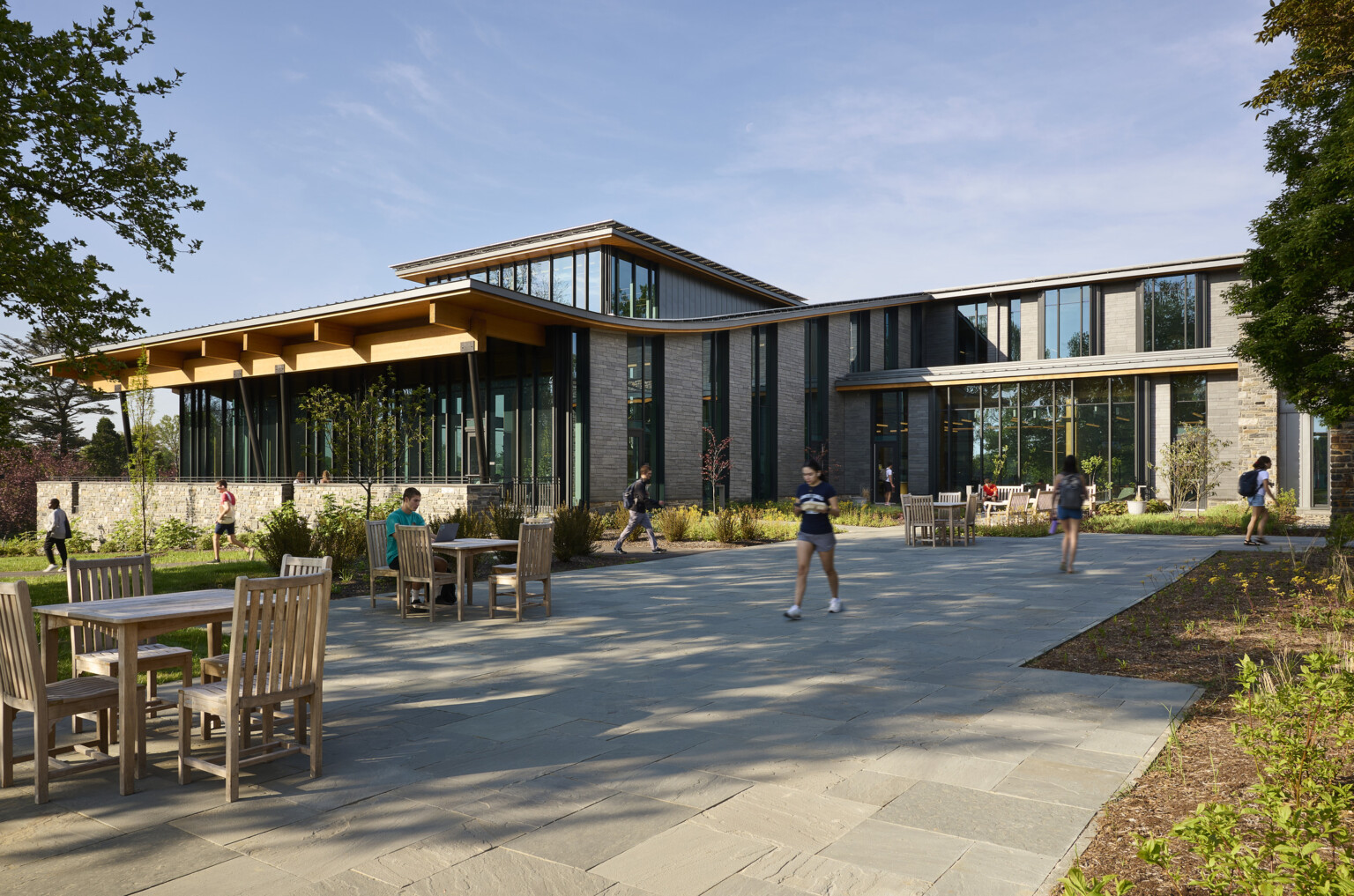
Hundreds of similar stories unfold across our portfolio. By playing the VALUES game, clients identify their true priorities for a more sustainable future. This clarity of purpose gives our multi-disciplinary teams the opportunity to solve for those specific priorities with defined targets, measurable goals – and yes, green building certifications as appropriate.
For more on our sustainable design philosophy and commitments, visit our Sustainability page.

